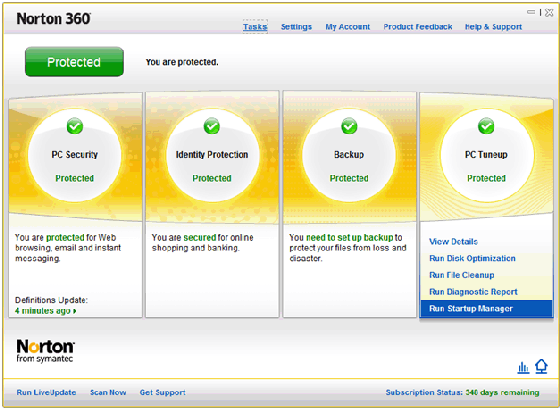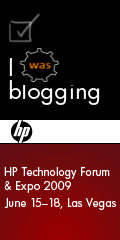 As befits an $118 billion plus company, Hewlett-Packard Corporation, or HP, holds a Technology Forum every year, this year in beautiful Las Vegas Nevada.
As befits an $118 billion plus company, Hewlett-Packard Corporation, or HP, holds a Technology Forum every year, this year in beautiful Las Vegas Nevada.
I had the privilege of being invited as a member of the Social Media to this year’s event.
While I had a seeming conflict with an event in Washington, D.C., HP is such an important part of the hardware purchases at Logikworx that I decided to make room to go to the HP Tech Forum, and see what was going on in the world of HP. I also wanted to see if I could make contacts among the ProCurve group. (I will use the Twitter hashtag #hptf going forward in referencing this event.)
Arriving in Las Vegas
For this trip, I flew United Airlines to Las Vegas. (Never again on United; my travails on United will be detailed in a blog post on AbsoluteWindows.)
Unfortunately, I missed my flight and had to take a later flight, traveling as my Los Angeles Lakers were in the process of winning their 15th Championship.
Checked into the Mandalay Bay for the first time ever in a gazillion trips to Las Vegas. Helpful check-in staff. However, my room was NOT ready! After about ten minutes, I was given a room.

Got refreshed, went to take a meal at the Red, White & Blue Café in the hotel. Was met there by Halley Bass, and later, Tom Augenthaler, both of Ivy Worldwide, and later still by Shane Pitman, Editor-in-Chief of Neowin.net.
Idiot waiter at the hotel refused my unsigned credit card with a stupid excuse about it not working. So Tom paid for dinner. (And no, it was not a ruse or a setup by me with the waiter’s help to make Tom pay for my dinner.)
Talked, socialized, went to bed.
Day 0: Pre-event, Behind the scenes
Early wake up.
Walked to, and past the Starbucks, forgoing a decaf, skinny, extra-shot latte, because of the long line, and went on to the #hptf registration.
Thanks to Becca Taylor, Social Media Manager at HP TSG, I was already registered. To pick up my expo credentials, all I had to do was log onto a system, click yes, and walk to a booth to pick up my badge. (CES could learn a lot from this.)
Shane Pitman is here, and I am introduced to Andrew McCaskey and Kara Karsten of SDRNews, Jeffrey Powers of Geekazine. Representing Ivy Worldwide were Tom Augenthaler and Halley Bass.
From there it was top shelf all the way.
In what should be a lesson to all large corporations, if HP can engage Social Media so swiftly and deeply, so should you!
First we were shown to the Expo Hall from which a purpose-built office for the bloggers covering the #hptf would stage.
 Dubbed the SoMe (as in Social Media) Room, this room had fat pipes. Really fat pipes. While I cannot speak to it, it may even have been as cool as a T1 or better. It was that fast!
Dubbed the SoMe (as in Social Media) Room, this room had fat pipes. Really fat pipes. While I cannot speak to it, it may even have been as cool as a T1 or better. It was that fast!
Scott Anderson also shows up, welcomes and thanks us for being there. Riight! We should thank him and Becca for the opportunity!
Since the room was safe and secure, we stowed our gear there, and went exploring.
Going to all these shows and seeing booths kitted out and manned, does not give one the amount of work required to put a show on.
Here at #hptf, I literally saw countless worker bees—of the human kind—scurrying about as they created and outfitted their respective booths and pavilions. At once, I was stuck by logistical tasks needed to put on such a show. COMDEX & CES, I forgive you. Posthumously, for COMDEX.
We had the opportunity to be shown around by Elizabeth Gillan, #hptf Events Director.
Elizabeth continued on to show us the confidential areas there, including the POD. However, the best was saved for last as she showed us the grand ballroom reserved for the event keynotes, which were to be presented later that night.
I never knew that event staging was such a big deal. Then again, I wasn't a theater or film major.
Staging Solutions Inc., of Houston, was in charge of staging the event, and Dave Lawson from SSI was there to show us around.
What was more impressive: the twin 75’x25’ anamorphic screens? The multiple huge-as-can-be digital projectors? The vast number of people backstage charged with making sure everything is alright? Or the full production stage located at the back of the room where the director was barking out orders into multi-channel walkie-talkies?
My personal policy has always been to let the professionals do what they have expertise in. Staging the keynote of an event is something you definitely need professionals for.
Elizabeth then asked us if we would like a table set up at the front of the room to better facilitate our blogging and tweeting. “Are you kidding?” we asked in unison. Dave said he’d take care of it, his only question being if we would like wired or wireless Intertubes access. We decided on wired, to be able to better push the HD content that Dave, Kara, and Jeffrey would be uploading directly to the Internet for immediate streaming.

Day 0: Luncheon with HP TSG PR
From there, we repaired to TheHotel at Mandalay Bay for lunch with our hosts for the HP Technology Forum & Expo, the Public Relations team for HP TSG, headed by Lynn Anderson. Location: a private dining room at TheHOTEL at Mandalay Bay.
In addition to Lynn, we are joined by Emily Neumann.
The lunch was definitely a tony affair, finished off with an exquisite desert. Unfortunately, I had to eat a fruit plate, kindly brought to me by one of our thoughtful stewards.
The conversation during lunch, however, was much, much better than the meal. During lunch I was introduced to Calvin Zito, @HPStorageGuy, of the HP Storage team out of Boise, Idaho, and Tom Foremski, @TomForemski, the Silicon Valley Watcher.
We then took a break to relax before the keynotes.
Day 0: The Keynotes
For this event, I am shocked, shocked to see that HP has planned for Social Media to be embedded into the communications fabric of the entire event!
This is at once pleasing, and scary.
For any holder of HPQ, is shows that the powers-that-be at HP are leaving no stone unturned in reaching out to potential clients and users, using whatever medium necessary. Scary in that for a mature company, HP is making the necessary moves to remain relevant to all demographics. HP’s competitors, real or supposed, should feel scared.
Anyway, our front-row media table is equipped with a T1-class connection, and reading lights! I have to give props to Dave Lawson and Staging Solutions Inc. for that thoughtful addition.
We are welcomed to the event by Tom Iannotti, Director and SVP for HP Americas and TSG, who then passes the baton to Ann Livermore, who needs no intro.
Ann Livermore, Executive Vice-President for TSG at HP
Ann’s speech gives us an overview of the state of HP. We are reminded of the imposing numbers behind HP, the company. Here, she drops a bomb with the force of a high-yield thermonuclear device: HP ships a server every 11 seconds! Yeah, not a typo: every eleven seconds.
Then she moves to the meat of her keynote.
The three trends CIOs worry about:
-
Data Center Transformation. The keys to achieving this are increasing data center efficiency, and driving automation and virtualization into the very fabric of any data center. Doing that, would lead to better business continuity and resource availability.
-
Information Explosion. How do you mitigate this? Improve information infrastructures, improve information services, and improve information governance.
-
Everything as a (Cloud) Service. Tips: utilize an adaptive architecture in your cloud, which must be technology-enabling. Develop a plan to move IT, applications, and business services to the cloud.
Next is Paul Miller.
Paul Miller, Vice-President, ESS at HP TSG
He talked about the HP BladeSystem Matrix, which is being touted as ‘a private cloud in a box’.
With the BladeSystem Matrix, a provider is able to provision services with the push of a button, and transform a process from 33 days to 108 minutes. The reverent hush that descended on the ballroom is proof that the audience, all made up of IT professionals is very impressed!
The HP Extreme ScaleOut portfolio. Being on the environmentally-friendly edge, with design and software dynamically helping to measure power footprint.
The POD. Oh, the POD. 22 full size racks of whatever goodness you want to populate it with. Customized and shipped to your choice of destinations, export restrictions permitting.
I will have an entire article devoted to the POD in the near future.
Birth Banerjee is next
Birth Banerjee, Senior Vice-President, Research at HP, Director of HP Labs
This guy easily stole the evening, no easy feat. However, in a room of gear heads, someone that know more about technology than we do, and about directions those technologies are going to take has our undivided attention.
Ever heard of the memristor? Well, HP invented the viable—commercial and stable—memristor!
Birth’s research is focused on eight high-impact research areas for the near term (I swear I had a good picture of his graphic, but it turned out I messed it up):
-
Intelligent Infrastructure: Exascale Data Center, photonic interconnects
-
Digital Commercial Print: imagine a customized version of the New York Times? Actually, at Logikworx, we already use one of HP’s commercial digital print services to deliver the limited edition print issues of The Interlocutor.
-
Content transformation,
-
Immersive Interaction: multi-modal interfaces
-
Information Management,
-
Analytics,
-
Cloud: develop an integrated cloud stack to move exabytes of data at terabytes per second to all 6 billion earthlings.
-
Sustainability: the 2%/98% problem. IT creates only 2% of the world’s carbon emissions. Yet IT must find a way to resolve the issues surrounding the rest of the world.
Day 0: After-Keynote Reception on the Expo Floor
Sounds repetitive, but the transformation of the Expo from a bare warehouse-like space buzzing with setup activity to the Expo is simply amazing reinforcing my admiration for the professional who perform those tasks.
Also impressive is the repast set before us, with several food distribution areas, and a great selection.
Once again, I gave my body to science, and tried everything, from the mini steaks to the sushi. Don’t worry, I accept your thanks for my sacrifices.
Day 0: HPTF 2009 TweetUp
My first TweetUp.
So, who is here at the official HP Tech Forum 2009 Tweetup?
@Augenthaler (Tom Augenthaler), @Beccataylor (Becca Taylor), @BuzzCorps (Ivy Worldwide), @Chasenskinner (Chase Skinner), @AKMC (Andrew McCaskey), @kkarsten (Kara Karsten), @chrispman01 (Chris Purcell), @hptechforum2009 (Scott Anderson), @ninabuik (Nina Buik), @hpstorageguy (Calvin Zito), @halleyclaire (Halley Bass), @jbgeorge (Joseph George), @erincollopy (Erin Collopy), @hp_connect (HP CONNECT Team), @Geekazine (Jeffrey Powers).
It is a good tweetup, getting to physically meet Twitterers I have been communicating with for a while, and the new folks I have had the privilege of meeting.
The chocolate fondue fountain is oh soooo inviting, but I’m steadfast in my refusal to fall off the low/no-sugar wagon.
We definitely go past the closing time, and we eventually shut down for the day.
Day 1: Walking the show floor, taking in the sessions
As with any expo I attend, the first day is spent walking the crowd, getting a feel for the crowd and trying to gauge the energy of the booth staffers.
One added knot is the state of the economy. At CntrStg/CES in January, all the positive energy was at CntrStg, whereas both attendees and presenters at CES seemed to be going through the motions with the defeatist attitudes of those who were unaware of where their next meals would come from.
The energy from the crowd and the HP staffers is very good. The Extreme ScaleOut products are getting a lot of oohs and aahs.
I cannot write anything about this event without giving mad props to the (HP) CONNECT staffer I met at Starbucks earlier today. Noticing my white (blogger) badge, she asked me what it was and if I was a member of HP CONNECT, the global HP IT user community. When I said I was not, she asked me to stop by the CONNECT booth, and sign up. How inviting is that?
Silly me was still groggy from not having any coffee yet, and I forgot to take down her name for praises to Nina @ninabuik and/or Chase @chasenskinner.
There are tons of sessions to attend, and I am trying to be very selective with my time.
I have decided on Servers, Personal Systems, and virtualization for the must-attend sessions. I will also try to see if there is an interview opportunity with Rebecca Lawson on Cloud Computing.
I am able to get in the sessions, and interview Rebecca about cloud computing, especially as it related to the SMB space.
Boy, did I ask for it!
Ms. Lawson is passionate about the cloud, and what it can deliver.
Talking to her gave me several ideas, and brought up several more questions that I am afraid that I need a follow-up from her before I present my thoughts on Cloud computing.
Simply put, the hour I spent with her is just not enough!
Emily Neumann was most helpful in securing this interview for me. For which I kindly thank her.
Day 1: HP CONNECT
HP CONNECT is the global HP IT user community, and one of the larger exhibitors at this event.
While not currently a member, a situation I will rectify shortly, the value is evident in the scope and scale of the community’s membership.
Anecdotally, I had the opportunity to dine with a couple of the members of the community.
Their obvious friendship made me ask where their company was located. “Miami”, said one man, and “San Diego county”, said the other. “Eh”, I asked. The answer? They were friends, and had been for eight years, but only always met at the HP Tech Forum. They kept in touch mainly through the CONNECT community
I then asked them if there was value in their membership. Of course, said both of them, almost simultaneously, echoing the responses I got from my decidedly unscientific polling of a cross section of the attendees as I approached them on the Expo floor.
Day 1: End of day Reception at The POD
The POD, an acronym for Portable On-demand Datacenter, is a product that just had to be invented.
What is it?
A standard size chipping container is gutted, and then engineered to accept up to 12,000 hard disk drives, or 45,000 compute nodes. It can be customized to your choice of multi-factor security, and faire detection and suppression. Active cooling is standard, utilizing variable-speed fans to achieve the desired 30-degree delta between hot and cold airflows.
Steve Cummings is the POD Product Manager for HP, and I was able to get a tour from him.
The reception is a pretty nice affair, with tours of the resident POD by #hptf attendees. The food is good, and background entertainment is provided by contortionists from the Cirque du Soliel. One of the performers was juggling two rubber objects in his mouth, prompting the money quote for the evening, “Does anyone here know the Heimlich Maneuver?”
As stated earlier, I will be delving into the POD in detail in later issues.
Day 1: HP CONNECT’s invite-only Luau at TheHOTEL at Mandalay Bay pool
Thanks to Nina Buik and Chase Skinner, I was invited to the HP CONNECT Community’s private luau .
And a real luau it was, with close to 90% of the crowd dressed in Hawai’ian gear!
Awards were given, speeches were delivered, and the sense of communion within members of the community was high, and palpable.
There were no hungry attendees at the luau, what with numerous servers walking by bearing salvers of good food. There were no parched lips either, as booths and bartenders dispensed needed restoratives to the crowd.
I even had my photograph taken with a modern-day, and younger Elvis.
Day 2: Final walkthrough the #HPTF Expo floor and good byes
Due to a previous commitment, I had to leave #HPTF on Wednesday, June 17 for Washington, D.C.
Resultantly, I could only walk the floor briefly, and say my goodbyes to the good people I had hung out with the past few days.
For such a shot visit, leaving was bittersweet.
My Conclusions on HP Tech Forum & Expo 2009
 HP Tech Forum 2009 was my first HP Tech Forum. It definitely would not be my last.
HP Tech Forum 2009 was my first HP Tech Forum. It definitely would not be my last.
I came away with a lot more respect for HP and the myriad number of ways they are engaging their communities, and using all media to get their message across.
I saw a company focused on not only innovating—an important point with me—on all levels, but also making sure that those innovations drew a direct line to the betterment of the computing experience in the near term.
Case in point is the viable memristor touted by Birth Banerjee. It wasn't esoteric research for some nebulous bragging rights. No, it was research to produce an revolutionary leap in computing in the near term.
From a Social Media standpoint, the preparation, execution, and access afforded us was just the sort of thing I could get used to. Embedding Social Media into corporate communications is something most companies aspire to.
Well, HP has it today.
That said, the primary reason for the Tech Forum is technology. From what I saw, HP is still innovating. Not only is it innovating, but it is innovating not only in esoteric fields, but also with a jaundiced eye on near-term results.
I expect nothing other than more greatness from HP.
I would like to thank the entire TSG Team at HP for the opportunity I had to cover the event for the Social Media community.
HP: Becca Taylor, Scott Anderson, Emily Neumann, Erin Collopy, Elizabeth Gillan, Lynn Anderson, Calvin Zito, Joseph George, Nina Buik, Chase Skinner, and Steve Cummings and the POD team.
Ivy Worldwide: Tom Augenthaler, Terri Stratton, and Halley Bass.
Props to the other bloggers here too: Shane Pitman, Tom Foremski, and the professional videography setup by Jeff Powers, Kara Karsten, and Andrew McCaskey. I was impressed by the professional way Kara, Andrew and Jeff covered the event.

Follow me on Twitter
This article previously appeared in the July 2009 issue of The Interlocutor.

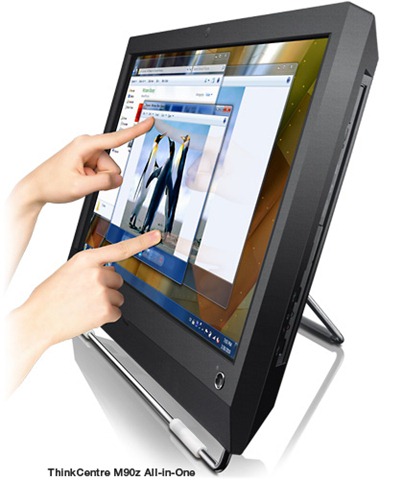

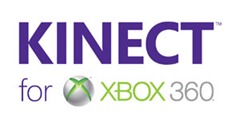


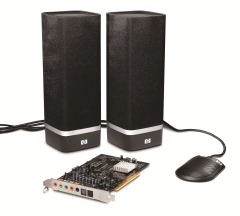



 HP SkyRoom is based on breakthrough video and image communication technology developed in HP Labs, the company’s central research arm. Elements of this technology were used by NASA’s Mars rovers to transfer high-resolution images back to Earth.
HP SkyRoom is based on breakthrough video and image communication technology developed in HP Labs, the company’s central research arm. Elements of this technology were used by NASA’s Mars rovers to transfer high-resolution images back to Earth.






